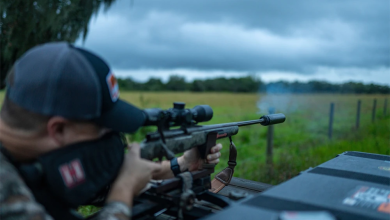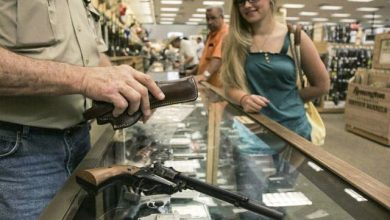Supreme Court Takes Up Key Second Amendment Cases

The Supreme Court’s new term has been dominated by high-profile battles over presidential authority. But beneath those headline cases sits another trend that TTAG readers will care about a lot more: the justices are lining up a series of gun-rights fights that could reshape how lower courts handle the Second Amendment after Bruen.
We’re only a few months into the 2025–26 session, and the court has already taken two major gun cases. Several more are waiting in the wings. If the justices keep granting petitions at this pace, this term may become one of the most significant for gun rights since Heller.
The Post-Bruen World: Thousands of Lawsuits and Cracks Between Circuits
Since New York State Rifle & Pistol Association v. Bruen in 2022, every federal court has been forced to abandon “balancing tests” and instead look at text, history, and tradition. That reset opened the door for thousands of challenges against everything from carry permits to drug-user prohibitions.
The result: a patchwork of rulings, conflicting standards, and a growing number of appeals courts saying different things about the exact same laws. The Supreme Court is now being asked to step in and clean up the mess.
If We Win: What Gun Owners Should Expect After NFA Reform
Here are the cases either on the docket or being considered this month.
Case: Wolford v. Lopez
Hawaii passed a post-Bruen law making it a crime to carry a gun onto privately owned property open to the public unless the gun owner first gets explicit permission from the property owner. It’s part of a larger “sensitive places” regime that resembles similar laws passed in New York, New Jersey, and California.
The challengers—and the Trump administration—argue that Hawaii’s rule functions as a near-total ban on public carry. They say there’s no historical tradition that allowed states to force armed citizens to ask for permission before entering a store, gas station, or parking lot.
The Ninth Circuit sided with Hawaii. Critics say that ruling misreads Bruen, which acknowledged that America has no history of broadly banning ordinary public carry.
The Supreme Court will hear arguments on Jan. 20.
Case: United States v. Hemani
Federal law blocks anyone who is a “user of or addicted to” controlled substances from owning a gun. After Bruen, courts split over what that phrase actually means and whether the restriction has any real historical support.
The Trump administration argues the prohibition fits within a long-standing tradition of keeping guns away from people considered dangerous or impaired. They point to early laws restricting habitual drunkards.
But the appeals courts disagree:
- 7th Circuit: Government can disarm “presumptively risky” people.
- 8th Circuit: Not good enough; the government must show the person is actually a threat to others.
- 5th Circuit: The ban only applies if the person was impaired at the exact time they possessed the gun.
In Hemani, the 5th Circuit dismissed the charge because prosecutors admitted they couldn’t prove the defendant was using drugs when he had the firearm.
The Supreme Court is expected to hear this case in early 2026.
On Nov. 14, the justices will review four petitions asking whether states can bar 18-to-20-year-olds from owning or purchasing firearms.
Earlier this year, the court declined to take a Minnesota case that struck down such a law. That left the ruling in place but didn’t resolve the national split.
These new petitions emphasize the unequal landscape: in some states, young adults can legally carry; in others, they’re blocked entirely. The court will announce on Nov. 17 whether it’s taking one or more of these cases.
This could be one of the biggest Second Amendment questions of the term.
On Nov. 21, the court will examine petitions challenging the federal prohibition on gun possession by anyone convicted of “a crime punishable by more than one year.”
Two petitioners—a man with several low-level convictions and a woman whose disqualifying offense was attempting to pass a bad check—say the lifetime ban is inconsistent with Bruen and America’s early legal history.
Lower courts are split. Some say the ban is permissible across the board. Others say nonviolent offenders remain protected under the Second Amendment unless the government can prove actual dangerousness.
The Department of Justice has asked the court to stay out of at least one case, pointing to a recently revived federal process that allows people to apply for restoration of rights. Critics say that sidesteps the constitutional question.
More petitions are coming. One of them asks the Supreme Court to decide whether the Second Amendment protects ownership of AR-15s and other semiautomatic rifles. That question has been waiting for years, and Bruen made the issue more urgent.
The justices haven’t announced whether they’ll take it. But with the volume of gun-rights cases piling up, it wouldn’t be surprising if this term ends up being defined as much by the Second Amendment as by the fights over executive power.
Read the full article here








